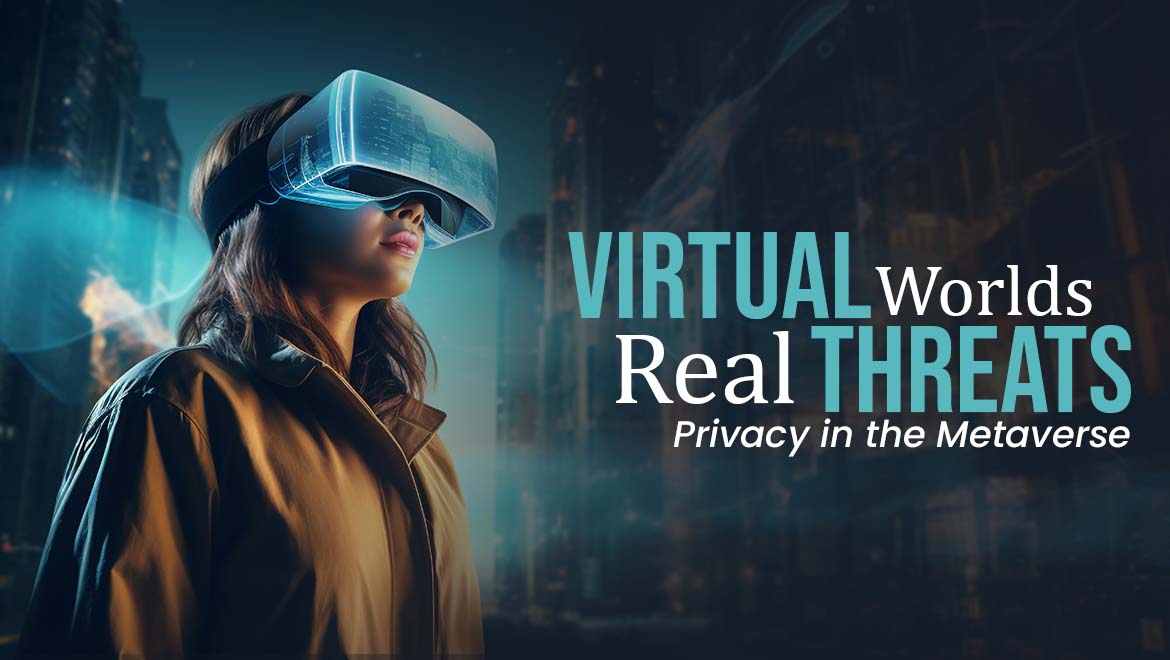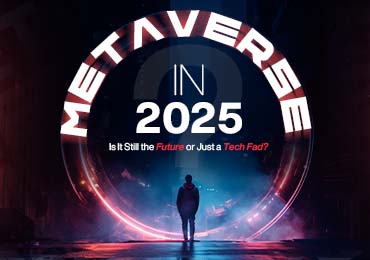

- By Admin
- 24 May, 2025
- 7 min Read
Virtual Worlds, Real Threats: Privacy in the Metaverse
The Metaverse—a shared, persistent, and immersive digital diaspora—is redefining how we work, interact, and live. With top tech organizations and decentralized platforms racing to build this brand-new dimension of the internet, the lines between the virtual and physical worlds continue to blur. But alongside innovation comes an alarming concern – safety!
As users step into virtual space to attend meetings, buy, socialize, and even buy real estate, they bring with them confidential data, assets, and identities —all of which are increasingly at risk. Identity theft, privacy concerns, and sophisticated cyber threats are no longer the fears of the future—they are today's realities.
Let’s explore Metaverse’s security challenges, and how you can effectively address them –
Privacy in the Metaverse: Who’s Watching You?
Privacy in the Metaverse extends far beyond conventional data collection. With full-body avatars, voice recognition, eye tracking, biometric sensors, and behavioral analytics, platforms gather volumes of highly personal data. Even your facial expressions and gestures can be monitored and stored.
This raises some alarming concerns –
- Data exploitation: Without robust consent frameworks, organizations can make use of this data for profiling and targeted advertising.
- Lack of transparency: Users often don’t know what’s being gathered or how it’s being utilized.
- Third-party risks: With a multitude of entities operating in shared environments, personal data can be leaked or shared without user knowledge.
Here’s How You Can Mitigate This Risk –
- Encourage user-centric data controls and customizable privacy settings
- Enforce privacy-by-design development frameworks
- Mandate transparent policies on data sharing, storage, and usage
- Use end-to-end encryption in voice and interaction data
Identity Theft: When Avatars Are Hijacked
In the Metaverse, your avatar is your digital identity. Whether it’s tied to your wallet, social profile, or gaming persona, it's a representation of "you" in the virtual world. It opens the gateway to identity impersonation and hijacking.
Cybercriminals can –
- Clone your avatar to impersonate you
- Get access to your NFT collections or crypto wallets
- Conduct fraudulent transactions or spread misinformation using your identity
The decentralized nature of multiple platforms makes it tough to trace or recover stolen identities. Moreover, the anonymity in digital spaces often emboldens malicious actors.
How to Protect Digital Identities –
- Inculcate biometric authentication for high-value access or transactions
- Leverage blockchain-based digital IDs for tamper-proof identity management
- Embrace multi-factor authentication (MFA) and device binding
- Crete a strong reputation scoring systems to flag suspicious behavior
Rising Cyber Threats in Virtual Worlds
Cyber threats in the Metaverse are more multilayered and complex than traditional web threats. Virtual environments, smart contracts, digital currencies, and decentralized infrastructures expose users to –
- Phishing attacks through fake wallet access links or metaverse invitations
- Malware embedded in virtual plugins, items, or assets
- Exploits in smart contracts that power NFT marketplaces and decentralized apps (dApps)
- Virtual real estate scams as well as fraudulent metaverse investments
As virtual economies thrive, so does the incentive for attackers to steal assets and breach systems.
Security Measures That Matter the Most are –
- Trust Zero Trust Architecture to thoroughly verify each interaction within the platform
- Conduct regular penetration testing and code audits for smart contracts
- Enforce sandboxing and network segmentation for applications
- Create incident response playbooks specific to digital environments
The Regulation Gap: A Race Against Innovation
In spite of its meteoric rise, the Metaverse operates in a regulatory grey zone. Traditional privacy laws like CCPA or GDPR are not completely applicable in immersive virtual environments. The absence of a unified legal framework leads to –
- Smattering of accountability when breaches take place
- Inconsistent privacy protections across multiple platforms
- Difficulty in cross-border enforcement of laws
What Needs to Be Done –
- Develop global Metaverse security standards
- Introduce cross-platform compliance frameworks
- Encourage inter-governmental cooperation for cybercrime response
- Promote self-regulation through consortiums of Metaverse developers
Empowering Users Through Awareness
Technology can only go far and beyond. For real-life protection, users require being educated about cyber hygiene as well as digital etiquette in the Metaverse.
Some of the Key Practices for Users –
- Avoid sharing personal data across virtual spaces
- Rely on wallets and verified platforms for transactions
- Be cautious of unsolicited links, messages, or avatar requests
- Update regularly passwords and enable MFA wherever available
Build a Safe Metaverse Starts Now
The Metaverse brings a thrilling futuristic vision to the table – but without strong security measures, it risks becoming an unsafe, lawless space. As businesses, policymakers, developers, and users, we should prioritize trust and safety from the ground up
Addressing identity, security, and cyber threats isn’t optional—it's mandatory or foundational to the long-term success of Metaverse.
Let’s ensure that as we step into these new realities, we carry with us real protections.

